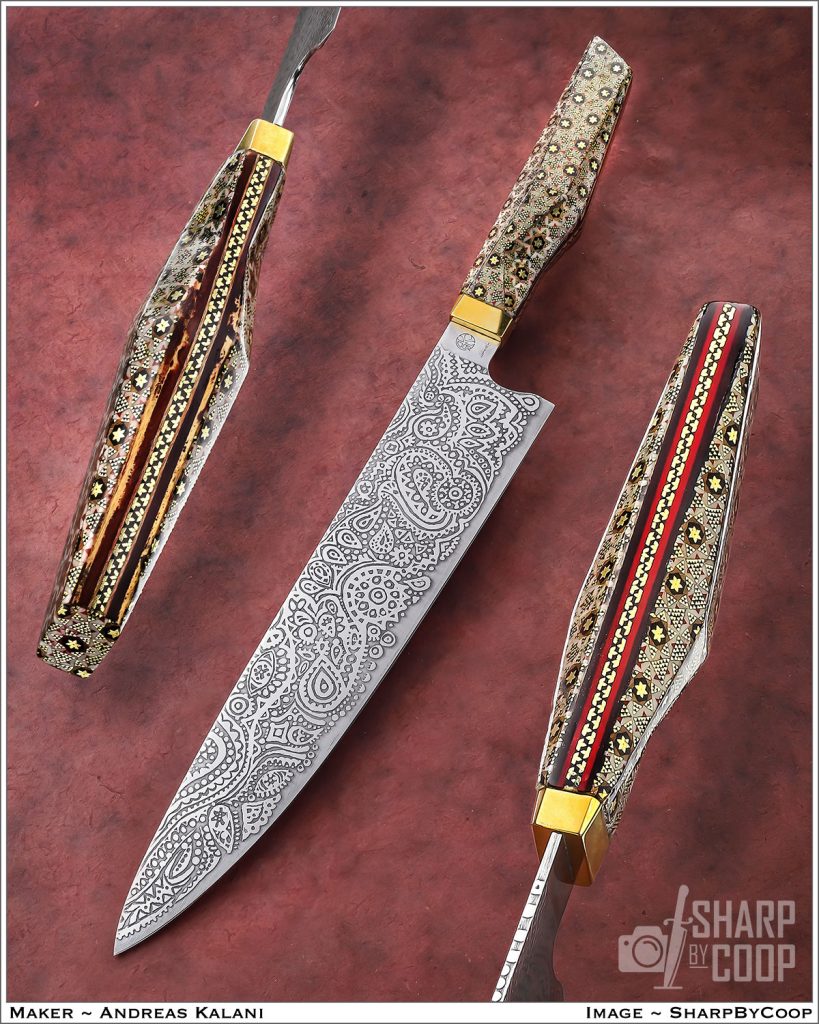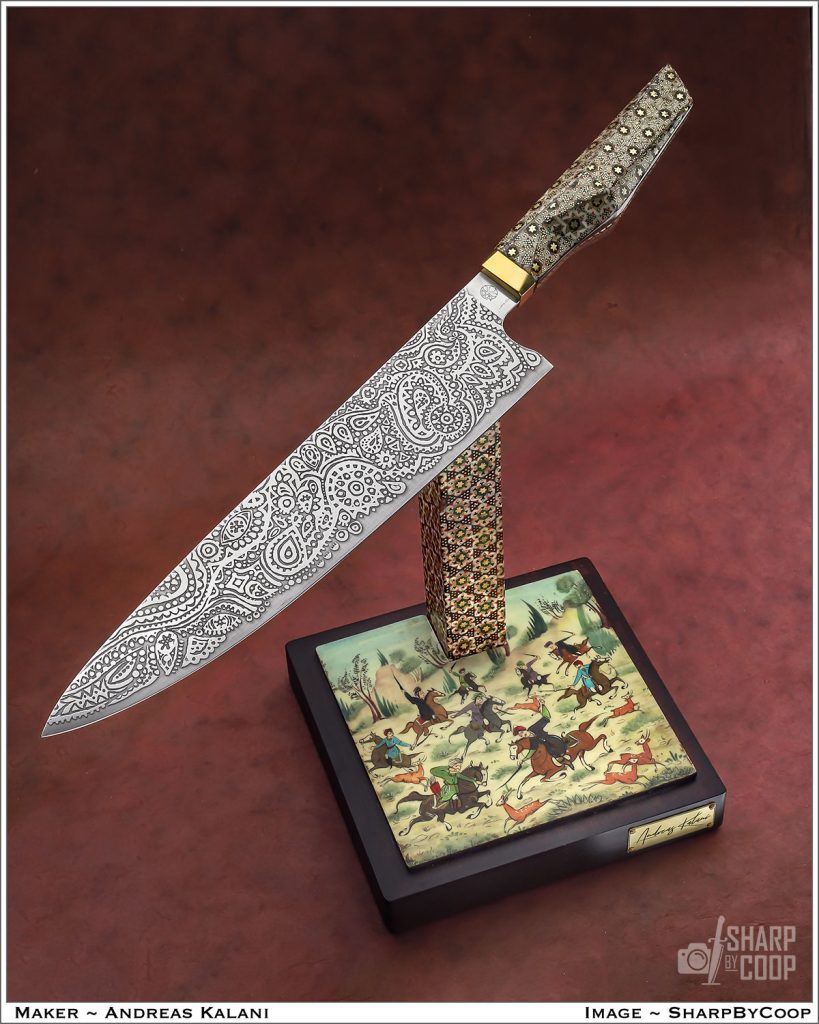Khātam (Persian: خاتم)
The story of the Ancient Persian Art.
Khātam (Persian: خاتم) is an ancient Persian technique of inlaying. It is a version of marquetry where art forms are made by decorating the surface of wooden articles with delicate pieces of wood, bone, and metal precisely-cut intricate geometric patterns. Khatam-Kari (خاتمکاری) or khatam-bandi (خاتمبندی) refers to the art of crafting a khatam. The exact time of the beginning of Khātam art is unknown, and what place and regions in the Persian empire were its original origin is not specified. Khātam construction in Shiraz city (my birthplace) dates back to about a thousand years ago, which is why I name this beauty Pārsa, which stands for Persepolis, the ceremonial capital of the Achaemenid Empire (c. 550–330 BC) in the southern part of IRAN by the Zagros mountains. The city of Shiraz is located 60 kilometers (37 mi) southwest of the ruins of Persepolis.
The materials used in constructing the handle are Camel Bone, Brass, and Walnut wood, inlaid and wrapped around stabilized turmeric wood. The Blade steel is high carbon 52100 with a hand-drawn, acid-washed, traditional Persian pattern design.
The pattern on the blade was designed by one of my good friends and a fantastic artist. She spent about a month developing and hand-drawing this stunning traditional Persian pattern on the blade.
The base is made from cherry wood with a traditional Persian miniature drawing (the Persian painting on paper sealed with resin) and wrapped with khātam.
Working on this piece was tons of fun, and nerve-racking, and it took about a year for me to understand and learn the art of khātam-Kari. The most intricate part was learning to work with all these geometric shapes to make more complicated designs. I’m genuinely proud of this piece, and it was so worth it to spend this much time learning the art and craft of my culture and heritage.



